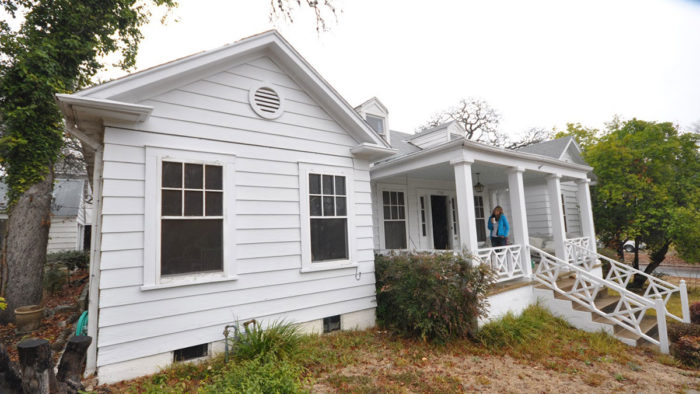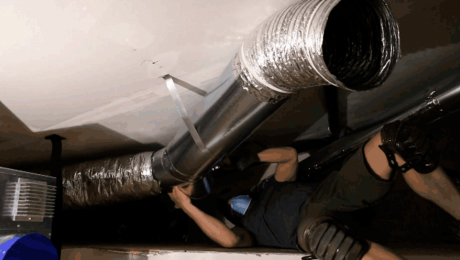Are you a wood snob like me? Have you ever seen a vinyl or cement siding with the stamped “wood” grain and felt ill? Well, we don’t have to abandon wood siding. We just need to install it with a bit of care.
My company is doing a very cool renovation & addition project to a 1935 house in Historic Clarksville which is a downtown neighborhood in Austin, TX. The architect is Hugh Jefferson Randolph. Here’s a photo of the house before we started.

The purpose of today’s blog post is to show how we’ve pulled the original pine siding off the house and then re-installed it. I just left the job site a few minutes ago and this 77 year old wood siding looks fantastic! But, there are some reasons this wood siding made it through nearly 8 decades intact.
The #1 reason it’s in good shape is AIR FLOW. This old house was never re-muddled and when we started this project we quickly realized the walls were never insulated. That’s great news for a remodel. That pine siding was installed on solid 1×8 shiplap sheathing, over solid 2×4’s. The inside of the house was another layer of 1×8 wood shiplap with some sheetrock and some original fabric wallpaper. This house was a leaky sieve (both water and air) and that’s why it survived so well. That siding would get wet, the walls would get wet, that solid lumber would drink up the water and store it till it could naturally dissipate with the airflow through the cavities. The problems occur when old houses get partly sealed or partly insulated. Once the airflow stops then the house has no way to dissipate the moisture it’s taking on during rain events. That moisture (when it can’t escape) leads to mold, rot, and ultimately failed buildings.
Check out this job site video I did to show how we reinstalled this siding with the ability to dry like it had in 1935. We ran short of the original siding and order some new yellow pine milled to the original profile so this house is 70% 1935 siding and 30% 2012 siding.The method is called Vented Rain Screen and it’s pretty straightforward. But there are some additional details for wood that need to be followed. It must be primed on all 6 sides, and the carpenters must prime all end cuts.
I’m also showing off some details for a very well insulated and air sealed house. This project utilized 1″ of Dow exterior rigid foam under the siding, and a excellent weather barrier with DuPont Drainwrap and DuPont weatherization products.
– Matt Risinger , Risinger Homes Austin, TX



























View Comments
Hi, Matt. I know it's been 5 years since you posted this, but I'm hoping you might still answer a couple of questions:
First, do you have anything to add to what you shared in your video? (Anything learned from this project or others like it, after some time passed?)
Second, would your advice here stand for the following situation? We live in Iowa, and recently had red cedar decking added to the front and side of our house. When we did this, the carpenter recommended cedar siding to replace the steel siding that prior owners had put up, covering what turned out to be redwood siding. We'd always hated the steel siding, and so liked this idea, assuming the carpenter would use best practices. (The siding has only been put on near our front (front entry is fully covered by roofing.) and side entries at this point, so we're interested to know if we should operate differently for the rest of the house.) Anyway, he removed the steel siding, some sort of wrap and styrofoam-like backing. Then, he put the cedar directly over the redwood. He'd noted that the cedar might not be fully dried when we spoke of whether to have it sealed--so we decided against that at the time. Today, maybe a week after he finished, I noticed bluish splotches here and there that I believe are what Tim the Builder calls bleeding from moisture behind the siding (See here: https://www.askthebuilder.com/bleeding-redwood-and-cedar-siding-stains/ ). They aren't everywhere, but it made me realize that perhaps our carpenter's methods weren't the best. Now, seeing your video, I'm wondering if what is a best practice in Austin should be applied to our situation. Sorry for all the details, but I thought you should know as much as possible to properly comment. Thanks for any thoughts--and for the excellent video.